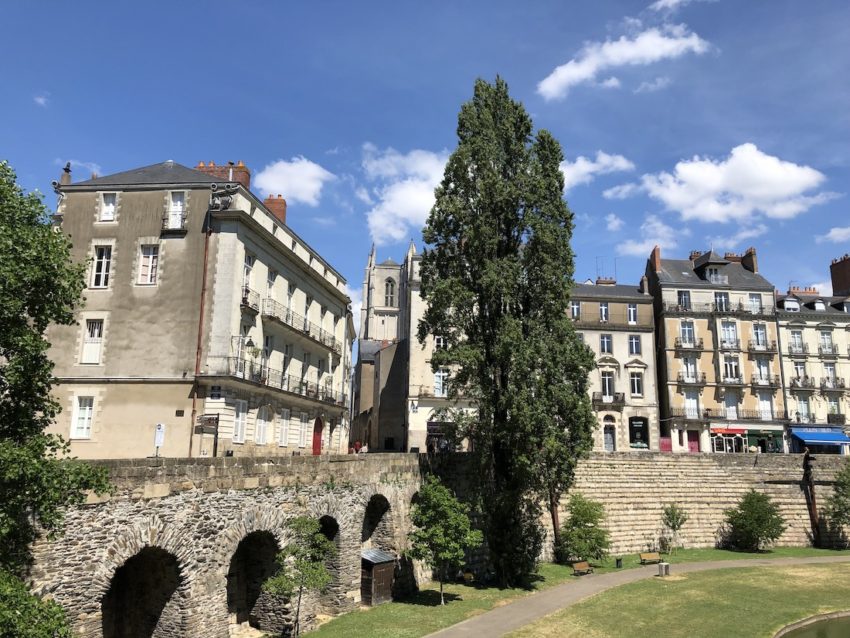Tomatoes of all shapes and sizes bulging and bursting with flavour, heads of broccoli larger than any I’ve seen and oysters from all points along the French coast. This can’t be a British supermarket…
In fact it’s the Marche de Talensac, one of Nantes’ oldest and biggest markets on a typical Saturday morning. Browsing the stalls inside and out during our short break in the city, I couldn’t help but feel depressed by the extraordinary variety of meat, fish, fruit and veg on sale, because back home it’s difficult to get anything like it. We’re usually stuck with limited, bland ranges bred for longevity on shelves rather than taste. In their quest for profits, our supermarkets have killed variety and choice in Britain.
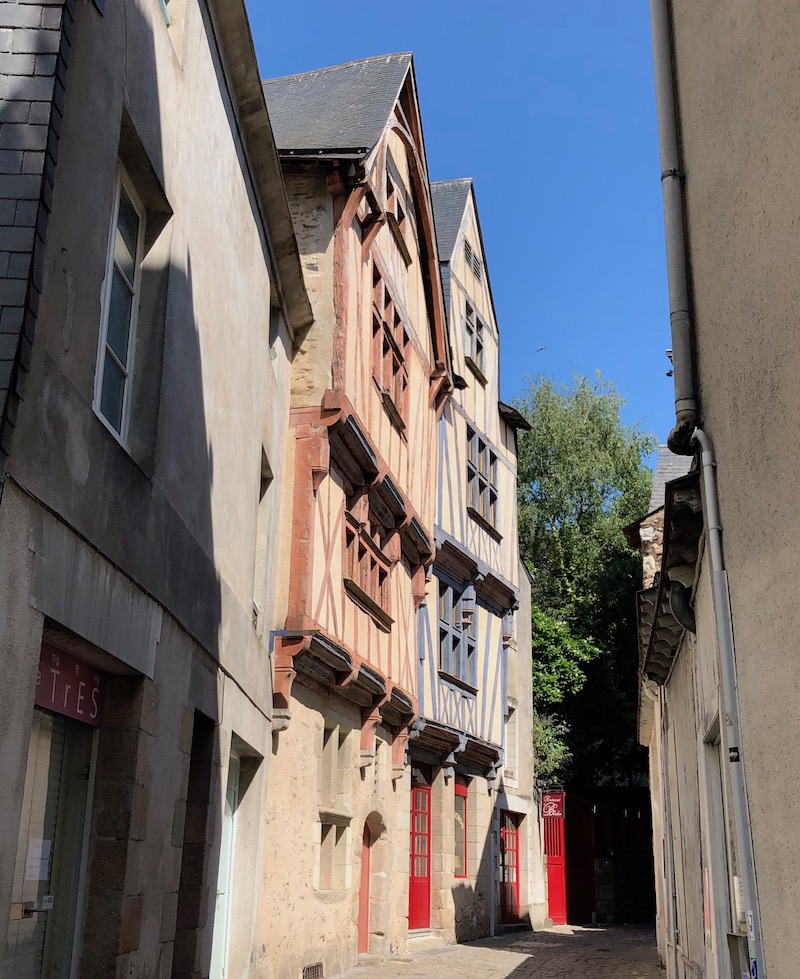
We found Talensac by chance on a walk back from another of Nantes’s shopping mainstays, the weekly Place Viarme flea market – the main reason we were staying in France’s sixth largest city for a brief, two-night stay. We’d long wanted to get another taste of those sprawling French weekend gatherings of antiques, retro and tat vendors and Nantes seemed ideal, being less than an hour’s flight away from London. The French city of Angers had surprised us with an excellent Sunday antiques market and we were hoping Nantes would do the same. However, it would prove disappointing, perhaps because in July many stall holders are on holiday and a lot of what was on offer was more jumble sale than anything else. Having dragged ourselves out early on the Saturday morning, we nevertheless wandered up and down, nosing around genuine antiques, tatty second-hand clothes, old postcards and bits of scrap. We’d done it in little more than 30 minutes and came away empty handed.
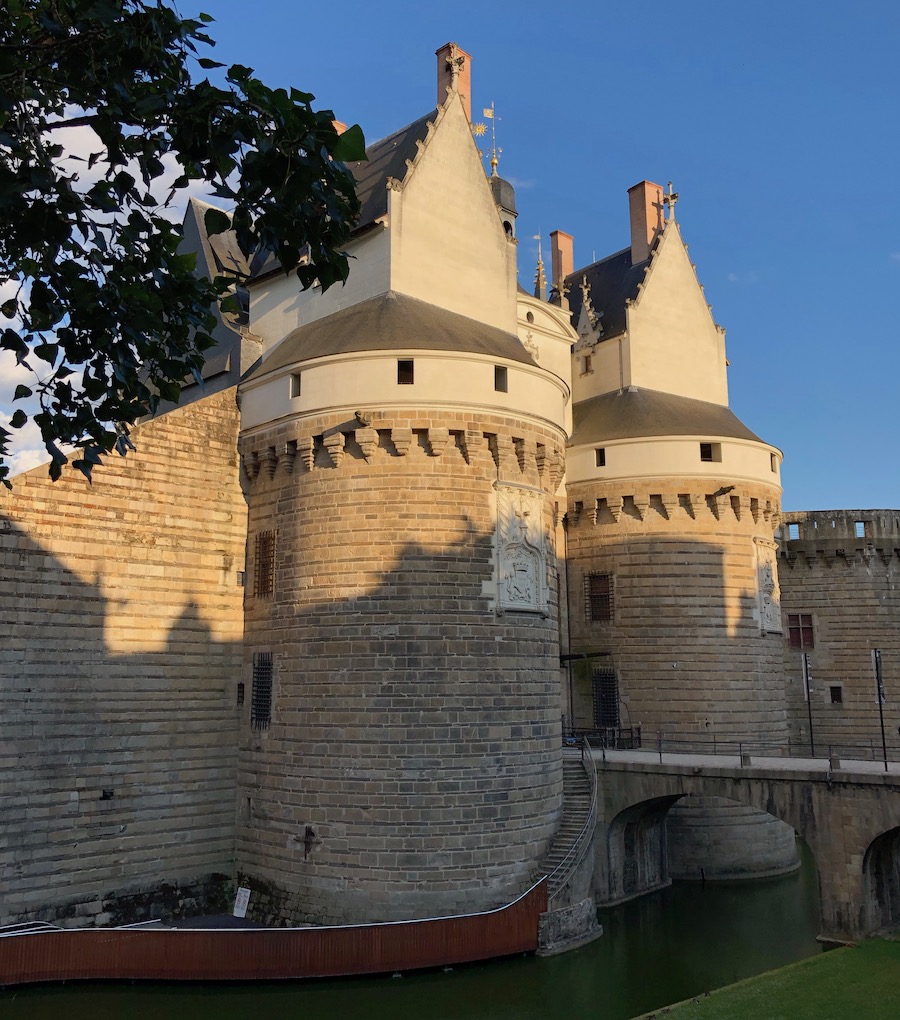
Place Viarme is to the north of the historic heart of Nantes, an easy-to-like city that lies on the banks of the Loire. We flew in on the Friday evening after several tedious easyJet delays from Gatwick, caught the bus into town and found our Novotel within the sterile surrounds of the City Congress development just south of the railway station. It was still hot and sunny as we walked into town past the remains of the old LU biscuit factory, now the contemporary arts space Le Lieu Unique. The building has an ornate tower celebrating LU, one of two that stood either side of the road into the city and now a symbol of Nantes. Beyond the station, modern tramlines and a moat are the impenetrable walls and medieval buildings of the Castle of the Dukes of Brittany, which in turn stand guard over the narrow alleys and streets of the old city centre. Dinner was taken at the fancy Le Patio’nnément, my meal consisting of a disappointingly tasteless salmon starter and a fish main course with a carrot and vanilla puree that was so sweet it made me gag. So much for French cooking… I consoled myself with a few drinks at one of the many city centre bars, the air thick with cigarette smoke and the lively banter of Nantes’s many students.
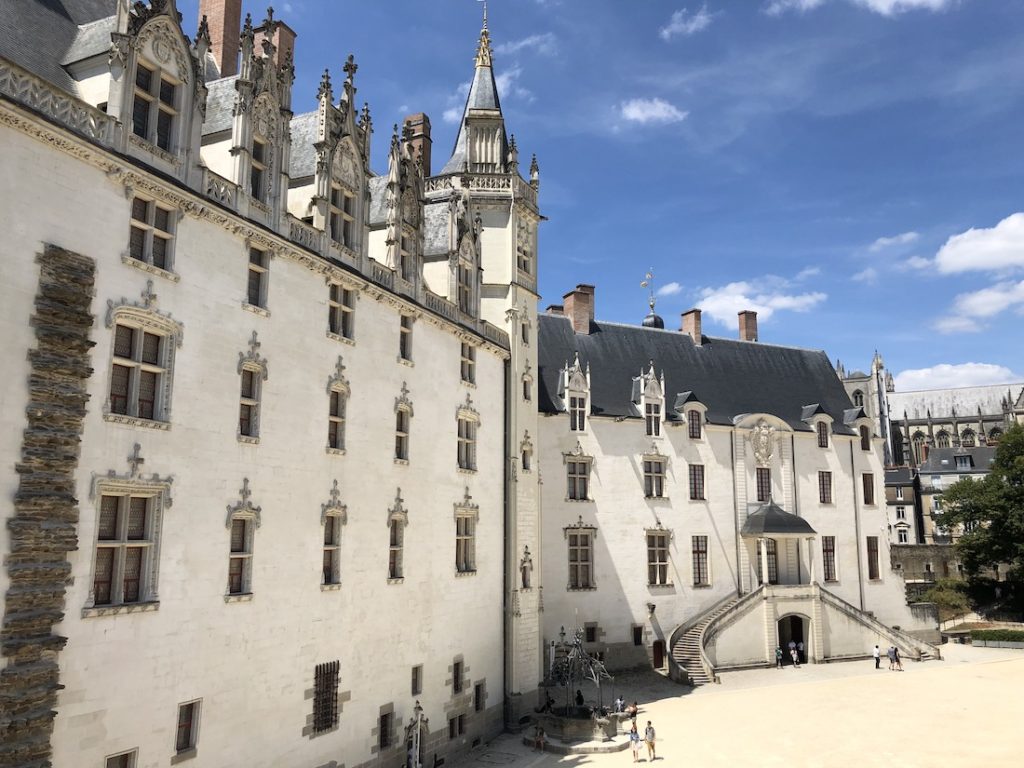
Saturday morning saw us explore the markets at Place Viarme and Talensac, before we walked back through the streets of the city to the Château des Ducs de Bretagne. Nantes suffered a great deal of destruction in the war and much was restored so it’s difficult to spot the really old from the modern reproduction. But the heart of the city is a heady mix of public squares, narrow alleys, grand mansion blocks and town houses, wooden-framed medieval buildings and architecture that reflects the classical, art nouveau and contemporary movements. It feels livable and warm, the streets bustle with shoppers and bars and cafes spill out onto the streets.

The castle is an impressive and attractive bastion with a broad internal courtyard that dazzles in the July sunshine. We walked the battlements and browsed the Nantes History Museum, which takes up most of the west wing. It’s detailed and generally well done, takes in pre-history and the Roman conquest, the takeover of Brittany by the French in the 16th century and the years of war and persecution that followed. I was disappointed by the lack of detail about wartime German occupation and the lack of rooms showing what the castle would’ve been like when the Dukes of Brittany were living there. In the evening we ate at Le Select in the old town and then walked over to Le Leiu Unique, which has a bar, outdoor seating under soaring plane trees, a chilled vibe and plenty of people watching.
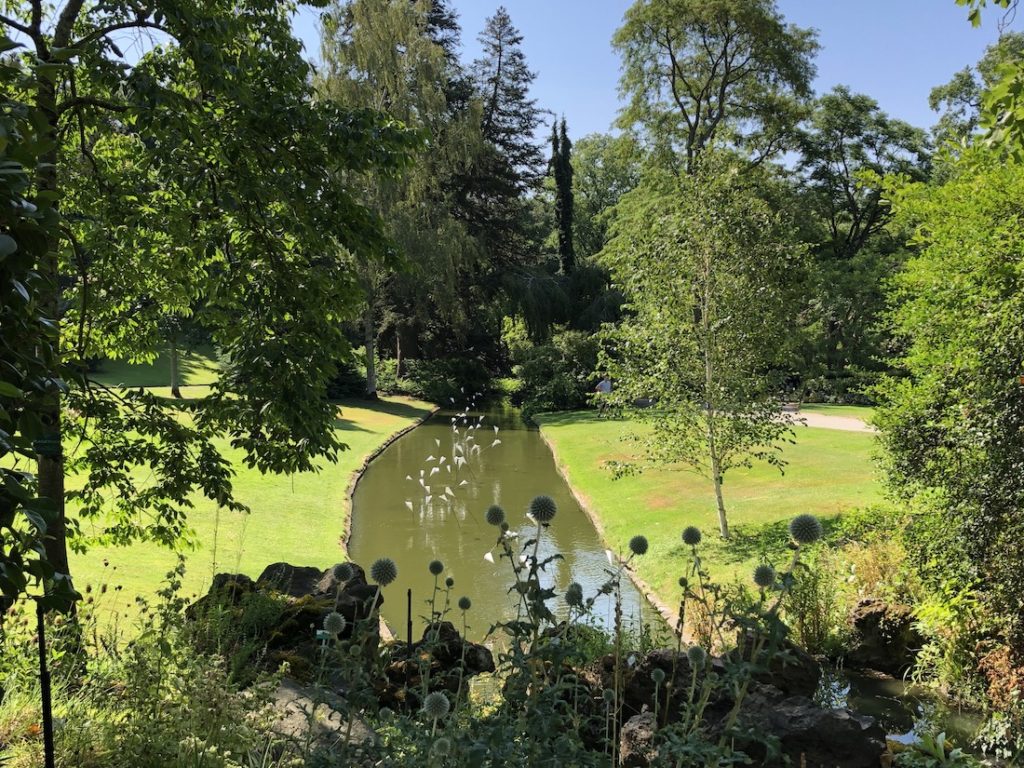
It was hot and sunny again on Sunday morning as we walked over to the Jardin des Plantes, a botanical garden with palm houses, waterways and a wide variety of plants from around the world. It dates from the early 19th century and has many larges specimen trees, which provided much-needed shade on such a sweltering day. It’s a beautifully manicured park and was full of playful art and installations that kept adults and children entertained during our time there.
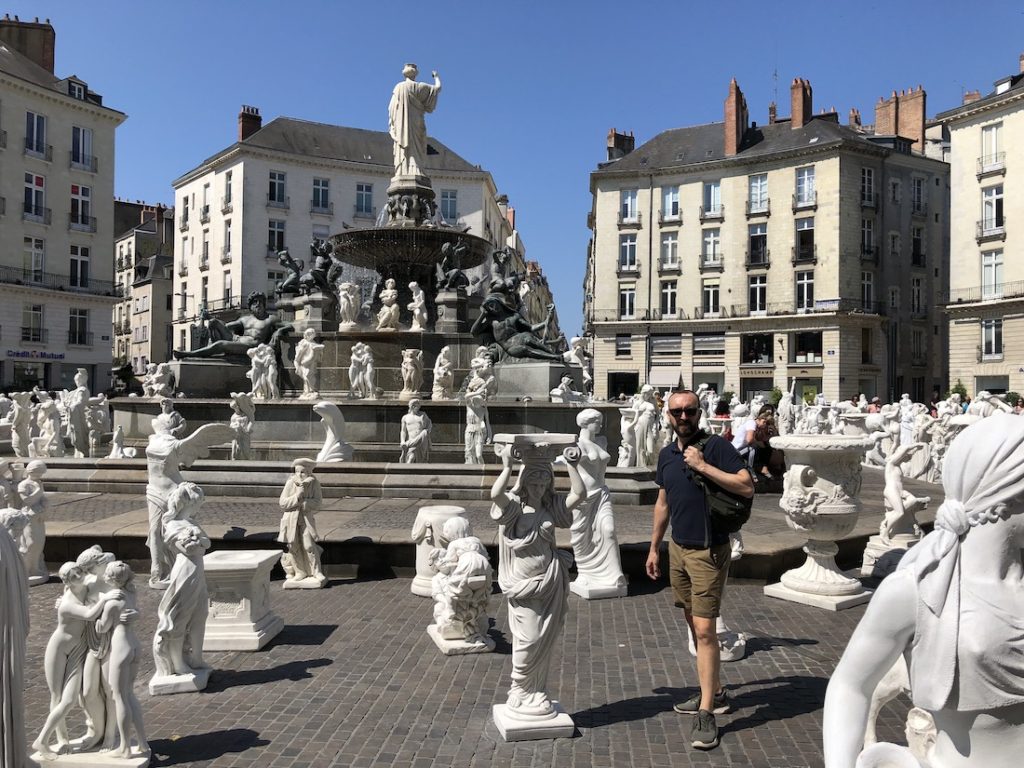
In fact, Nantes was full of outdoor art during our visit as part of the annual Le Voyage à Nantes summer festival and we came across several of the pieces during a walk through the city centre to the grand Passage Pommeraye shopping arcade. The most eye-catching installation was in elegant Place Royale, which Stéphane Vigny had populated with dozens of statues in reconstituted stone, reflecting the square’s central fountain and the fact that many of the surrounding buildings are modern reproductions of those destroyed by bombing in 1943. Our other favourite was Jungle Intérieure, created by the artist Evor as a hanging garden down a passageway right in the heart of the city. The jungle is overlooked by buildings old and new and shows just what can be done in even the most unpromising of back yards with a bit of imagination.
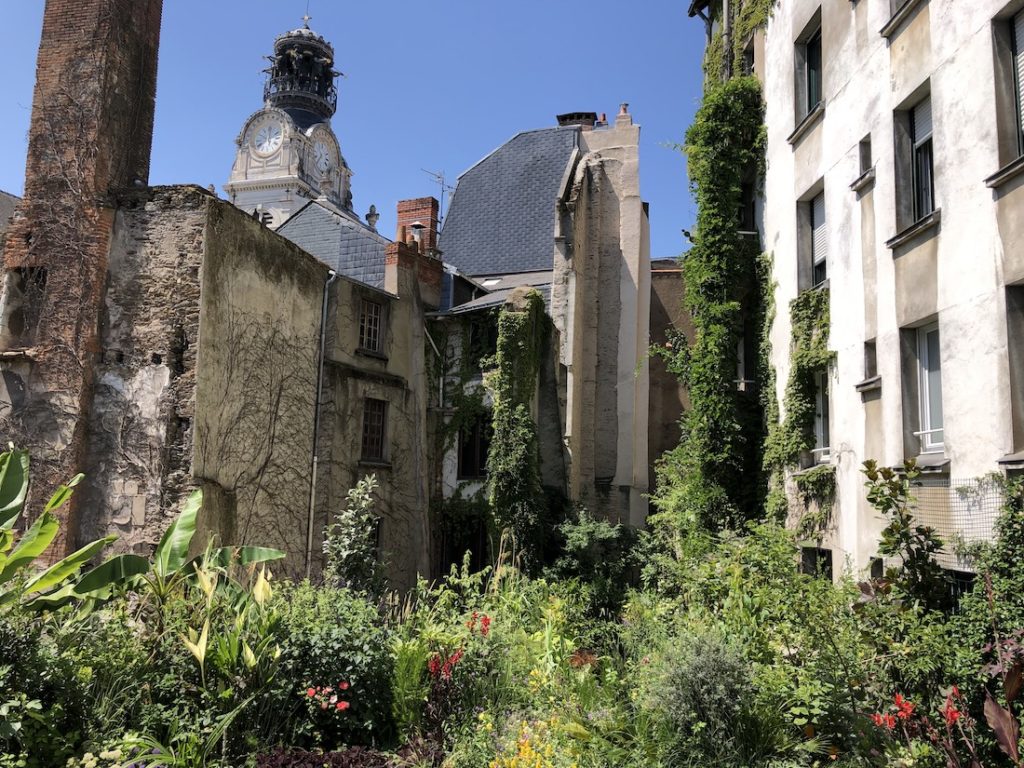
We wandered back to Le Leiu Unique to relax in the shade and drink a few beers while we waited for the bus to take us to the airport and our flight home. Nantes had proven to be welcoming, attractive and walkable, a city with history that’s confidently embracing the future. Hot it may have been but it provided a few days of light relief after some turbulent weeks at work. We missed a lot too during our short visit, but that gives us good reason to return one day.

